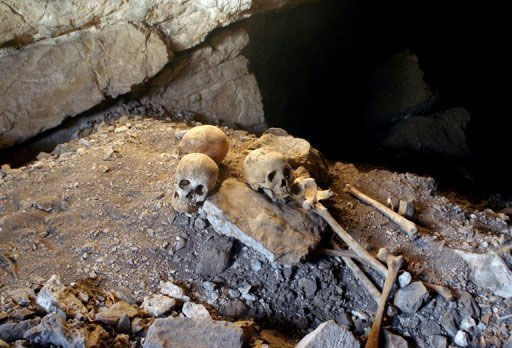Mexico studied 30 sets of ancient remains
Newly discovered 2,000-year-old remains in Mexico can provide links with the first settlers in the Americas.
A total of 30 sets of remains have been found inside the 'La Sepultura' cave in Tamaulipas state, Mexico. They are being studied by genetic experts to determine whether this group is related to the first groups of people coming to the Americas.

The remains in the cave "La Sepultura" - (Photo: AFP)
The results of carbon isotope analysis and ancient DNA studies will indicate that this is the "home" of one of the continent's oldest genetic lines, involving those who crossed Bering's waist about 10,000 years ago. year or not.
Scientists at the Mexican National Institute of Anthropology and History (INAH) and Cordoba University (Spain) are examining these remains, according to NBC News.
INAH expert Jesus Ernesto Gonzalez Velasco said that DNA research and carbon isotope analysis and human skull morphology will allow them to understand the cultural habits of the pickers and gatherers of that time.
Previous studies have found mummy samples near the 'La Escondida' cave, with DNA markers belonging to the first groups of people settled in the Americas.
- 2,000-year-old tomb in Mexico
- Ancient remains reveal our 'fishman' ancestors
- Graveyard for children more than 2,000 years in ancient China
- Discovered a 1,300-year-old mass grave
- The remains of the iron-clad army of the ancient Greek island army
- The 5,000-year-old fist couple remains in Russia
- Detecting the remains of young women is a cross between two different species
- Hundreds of remains reveal tragedy
- Dozens of remains in stone casket 1,600 years in Wales
- The remains of the medieval woman are over 2m high in Poland
- 9,000-year-old remains reveal the collapse of the old city
- Egyptian remains 3300 years with the ring
 Discovered an ancient centipede fossil 99 million years old
Discovered an ancient centipede fossil 99 million years old Discovered bat-like dinosaurs in China
Discovered bat-like dinosaurs in China Discovered a 200-year-old bronze cannon of the coast
Discovered a 200-year-old bronze cannon of the coast Discover 305 million-year-old spider fossils
Discover 305 million-year-old spider fossils